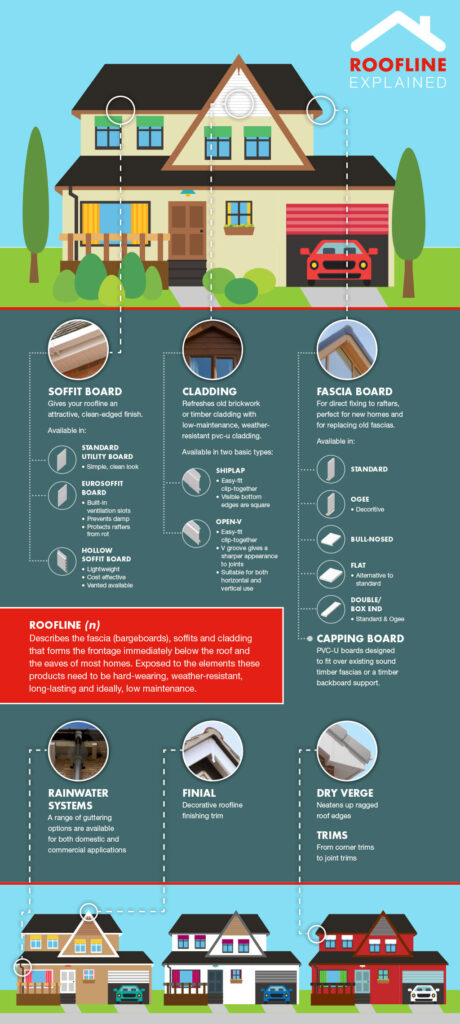Introduction to Rooflines
Gaining a comprehensive understanding of the roofline and differentiating between fascia boards, soffit boards, and utility boards is imperative for efficient project completion. Whether you are a homeowner undertaking a DIY endeavor or a professional contractor aiming to deliver optimal services, familiarity with these elements can save valuable time, money, and ensure accurate execution from the outset.
Understanding the Concept of a Roofline
Let us begin by exploring the concept of a roofline. Essentially, it refers to the outline or profile where the roof meets the walls of a structure. Serving both functional and aesthetic purposes, an intact roofline provides protection against inclement weather while enhancing the overall appearance of the property. Properly maintaining this aspect not only safeguards against water damage but also promotes suitable ventilation within the premises.
Components of a Roofline: Fascia Boards, Soffit Boards, and Utility Boards
Now let us delve into each component that constitutes a roofline: fascia boards, soffit boards, and utility boards.
Fascia Boards: Function and Importance
Fascia boards are typically installed horizontally along the lower edge of rafters or trusses. Their primary function is to support gutters while preventing water intrusion into underlying structural components. Additionally, they contribute to visually appealing exteriors visible from street level.
Soffit Boards: Bridging the Gap and Facilitating Ventilation
Soffit boards reside beneath eaves in close proximity to exterior walls. They bridge gaps between these walls and fascia boards while facilitating ventilation for attics or overhead spaces. By allowing fresh air through vents while ensuring hot air escapes via ridge vents or gable vents, soffits regulate airflow effectively. Adequate ventilation prevents issues such as condensation buildup leading to mold growth or wood rot.
Utility Boards: Enhancing Functionality and Convenience
Utility boards constitute additional elements incorporated into certain roofing systems based on specific needs and requirements. These versatile additions serve practical purposes such as supporting external fixtures like lighting systems or security cameras discreetly yet efficiently. Though often concealed from view, utility boards significantly enhance functionality and convenience in your roofline system.
The Role of Each Component in a Roofline System
By comprehending distinct roles played by fascia boards, soffit boards,and utilityboards within your roofline system,you can plan and execute maintenance or renovation work effectively. Furthermore, this knowledge empowers informed decision-making regarding material selection, installation techniques, and potential upgrades for enhanced durability, energy efficiency, or aesthetic appeal.
Effective Communication with Roofing Professionals
Moreover,this understanding fosters effective communication with roofing professionals should their expertise be enlisted. Armed with knowledge about these components of a roofline system,you can confidently discuss your requirements while ensuring alignment between expectations and project outcomes.
Conclusion: The Importance of Understanding Roofline Components
In conclusion,dedicating time to comprehend the functions and disparities among fascia boards, soffit boards,and utility boards is crucial for any individual involved in roofline-related projects. This acquired knowledge not only conserves valuable time and resources but also contributes to achieving successful results from the outset. Therefore,take the opportunity to educate yourself on these integral elements as they undeniably prove invaluable in upholding a well-protected visually appealing roofline for years to come.
Our Helpful Infographic and Contact Information
So, here’s our helpful infographic which tells you what’s what, where it goes and what it’s called. And don’t forget our sales team is here to help you can contact us here.


